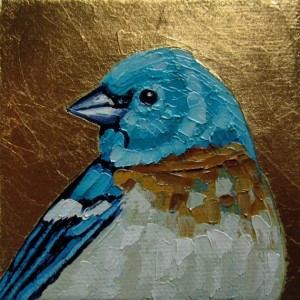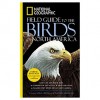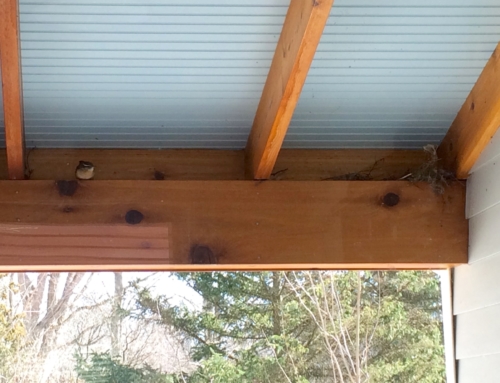
Lazuli bunting painting by Julie Costanzo. Reproduced with permission. Visit juliecostanzo.com (link below).
I was richly rewarded the other morning for leaving my (well-beaten) paths. I live up-bank from the Huron River, near a one-lane bridge. I crossed it on foot then headed up into the hills, a route I’ve never followed before. I’m an inveterate walker, but I sometimes forget to wander.
These hills are thickly settled in that semi-enlightened exurban way: the land’s not been so tidied up that wildlife’s been pushed out. There is quite a lot of what some call scrub and others know as ecologically indispensible greenway. Yes, the big estates are disconcerting but at least they’re not surrounded by putting greens.
With cover comes wildness. Here’s what I mean. This morning, a flash of blue caught my eye—“Bluebird,” I said aloud with delight—but when it alighted in some wahoo along the roadside I could see that it was not an eastern bluebird: too small and too much black, particularly on the head. Indigo bunting? No: pale breast, and—too much black.
I confess to being woefully unprepared: no spotting scope or binoculars, no pencil or notebook to record details. Moreover, my powers of observation have rusted out a bit.
The wild world, in early spring, in southern Michigan, offers up so little color that sojourners in the out-of-doors learn to distinguish countless shades of brown and gray and sometimes even see reds and yellows. Blink hard, look again, and you realize your color-starved brain is playing tricks on you or having a flashback.
 Chagrined, I went home and immediately pored through the National Geographic Field Guide to the Birds of North America we picked up at the Ding Darling Wildlife Refuge one year when we’d escaped the dreary cusp of a Michigan spring for the Florida tropics. My eyes fell upon the drawing of the lazuli bunting, which looked to me exactly like the bird I’d just seen. The range map shows that this little passerine lives and breeds west of the Great Plains, so I began poking around online to see what else I could learn. (Climate change is mixing things up, in terms of species range.)
Chagrined, I went home and immediately pored through the National Geographic Field Guide to the Birds of North America we picked up at the Ding Darling Wildlife Refuge one year when we’d escaped the dreary cusp of a Michigan spring for the Florida tropics. My eyes fell upon the drawing of the lazuli bunting, which looked to me exactly like the bird I’d just seen. The range map shows that this little passerine lives and breeds west of the Great Plains, so I began poking around online to see what else I could learn. (Climate change is mixing things up, in terms of species range.)
From the Michigan Audubon site, I learned that in 2003 and 2004, lazuli buntings were counted in two northern-lower-peninsula Michigan counties—sightings that were far, in years and miles, from my morning walk, as well as unconfirmed. Next I found this from a birding expert at birding.about.com: “Vagrant sightings are regularly reported much further east of this bird’s expected range, particularly during fall migration, and they can be reported much further north as well.” Well, maybe…
I’m stumped. I’m also re-inspired, and I wish I’d looked more closely. What had I failed to see or seen wrong? I’ve become a little lazy about learning about birds.
March to early April offers some of the best birding in the Great Lakes region. Migrants pass through and trees’ new leaves remain the merest hints of buds. The view skyward, while drab in the macro, is relatively unobstructed and scintillating in the micro. If you’ve never birded before, now would be a good time to give it a try.
Begin by picking up a good field guide and reading around in it regularly so that you’ve got a catalogue of bird images in your head to flip through when you see a bird. (I’ve included links to favorites below.) And consider reading this book too: Crow Planet: Essential Wisdom from the Urban Wilderness. Author Lyanda Lynn Haupt, an accomplished natural history writer who, stranded in the city and reeling, became an expert on the American crows living in her Seattle neighborhood. Crow Planet chronicles that experience and includes some of the best descriptions I’ve ever read of how to notice, engage with, and learn about the wild animals who have adapted to our human neighborhoods.
For quickly building up that catalogue of images in your mind, nothing beats flipping through an old-school book packed with color pictures:
National Geographic Field Guide to the Birds of North American
Sibley Field Guide to Birds of Eastern North America (There’s a Western North America edition, too, and a Sibley website.)
Websites and Apps take things to whole other level:
Peterson Guides (I got my start learning about birds from a Peterson Field Guide and I still use my well thumbed copy. I think it’s time for me to try their Apps.)
I find this website most useful if I’ve already got some idea what I’m looking for: Cornell Lab of Ornithology All About Birds.
Read more about Crow Planet and Lyanda Lynn Haupt here.
And learn more about Julie Costanzo’s artwork here.









Really nice on the sometimes reds and yellows, the expertise in browns and grays (Seasons at Eagle Pond-era Donald Hall would be proud, too).
I am so happy to read this! My bird book is woeful, at best! Thank you for the re-inspiration! Anne
[…] A couple of years ago I wrote a little pep talk here after noticing the fact that my wild-nature knowing skills had atrophied a bit, which is really just another way of saying that I had gotten quite undisciplined about paying close attention to the biotic community into which I am woven, a direct consequence of being too caught up in Human’s-Only World and too removed from my own sources. You can click here to read it. […]
Thanks for letting me know you read this. I have never in my life been so grateful to live where I can hear birds. I figure I have no excuse whatsoever for not paying attention. And the news–it steers me away from life. Not good. xo